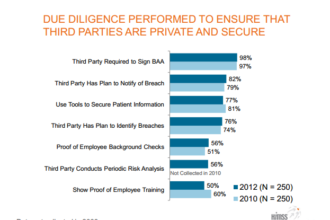This is the third post in a series on care coordination and the importance of the electronic medical record to effect that coordination.
This is the third post in a series on care coordination and the importance of the electronic medical record to effect that coordination.
Medical images such as CT scans, MRI and pathology specimens are largely all digitized today so they can be transmitted to any location in an instant. This means that the most experienced physician at a distant institution can be called upon to review, say, a mammogram that has raised questions for the initial local reviewers or for a pathology specimen which is of an unusual type. It also means that when a patient goes for a specialty visit, his records could go simply and instantly and be available for the specialist(s.) This obviously will save time and improve patient care at limited increased cost. But it is largely not what happens today. Here is an example of what actually happens now.
A gentleman, I will call him Otto, who lives in a remote area in northern Pennsylvania developed a chronic cough. He went to his primary care physician, who diagnosed bronchitis and gave him a prescription for an antibiotic. But the doctor was clearly concerned and told Otto to “come back in two weeks if the cough is not gone.” Two weeks later, the patient returned unchanged. He was sent to the closest hospital, about an hour away, for a CT scan of his lungs. The result was not good; it looked like lung cancer. To definitively confirm the diagnosis he was told to come back in four weeks [!] for a biopsy to be done by inserting a needle into his chest. Why four weeks? Because the specialist at that rural hospital only did these biopsies every other Friday and he was booked up until a month later. So Otto had to be “patient” and came back as scheduled. The biopsy, sent to another hospital a hundred miles away for review, confirmed lung cancer. Now he was referred to a surgical specialist in yet another distant city, an academic medical center. That took a few weeks to arrange and, when he met the doctor, he was told that to make a good plan for treatment it would be necessary to get a PET scan. “OK,” he said, and it was arranged for two weeks later – the PET center just down the hall being booked up until then. So he drove home and then back two weeks later. Once the scan was done, a call came from the surgeon’s office that his return appointment had to be postponed for a month since the surgeon would be out of town. His wife, protesting that that was too long to wait, arranged for a visit to be “fit in” in two weeks rather than four.
By chance we happened to visit them that day and heard his story. I called my former University of Maryland Greenebaum Cancer Center colleagues and was told that he could be seen concurrently by a team of surgeon, radiation oncologist, medical oncologist and nurse practioneer in just three days time. But he would need to bring his medical record, his CT scan, the PET scan and the pathology report. So he had to call and then drive to each of the hospitals and pick up the materials. What he picked up were not pictures or films but CDs of his CT and PET scans and his pathology report; in other words they were already in digital format. Too bad these hospitals were not yet capable of just sending them via the Internet to the cancer center in the third city. This is supposed to be a story about the problems of getting information from one physician or hospital to another, but you will have also realized that it was about remarkably less than good care for him – waiting weeks to get the biopsy, more weeks to get the PET scan and then the absurdity of being told he could not be seen by the surgeon for another four weeks. What Otto needed was a well-coordinated, team-based approach to care, which he eventually got – but which he certainly should have gotten long before. This happens all too often in American medicine today.
This is the typical way most patients get treated for cancer (and most other chronic illnesses.) Go to one doctor and then once he or she is done with his/her recommendation, get shunted off to the next physician, and then the next, etc. The patient may be sent to another physician for a “second opinion” but never do the doctors actually sit down together and talk through the issues. When a team jointly discusses the patient’s situation, jointly listens to the patient’s (and family’s) needs and then jointly offers a plan, you can bet that the plan will be far superior – and there is not second guessing later. And as treatment progresses, the team can monitor progress and make course corrections as necessary. The multidisciplinary care coordination approach is not just better, it is far superior. If you develop a chronic illness and your doctor wants to refer you to a specialist, insist on a team-based approach.
Sharing information is a critical element of this approach. Today hospitals (and doctors) do not share medical information among themselves readily, such as when a patient is discharged from one hospital but then ends up in the emergency room of another hospital days or weeks later. Similarly, if a patient has a test at one hospital but then is referred to another for a procedure, it is nearly impossible, as we have seen in the story above, to electronically send that data from hospital to hospital. Instead, the patient usually has to act like “Federal Express” and pick up the information and hand deliver it to the other location, just like Otto. Not a good arrangement – it takes time and it only adds to the patent’s sense of anxiety when the systems should be working to reduce patient angst. Once the electronic medical record is available on a universal basis this difficulty should be abated. Meanwhile hospitals that determine how to share information now will find that they are benefiting patients and in the end benefiting their institution. They will be recognized as providing better care and be rewarded with patient referrals.
But this story raises the question as to why with the information in digital format and the Internet ubiquitous that records like Otto’s cannot readily be transmitted today?






